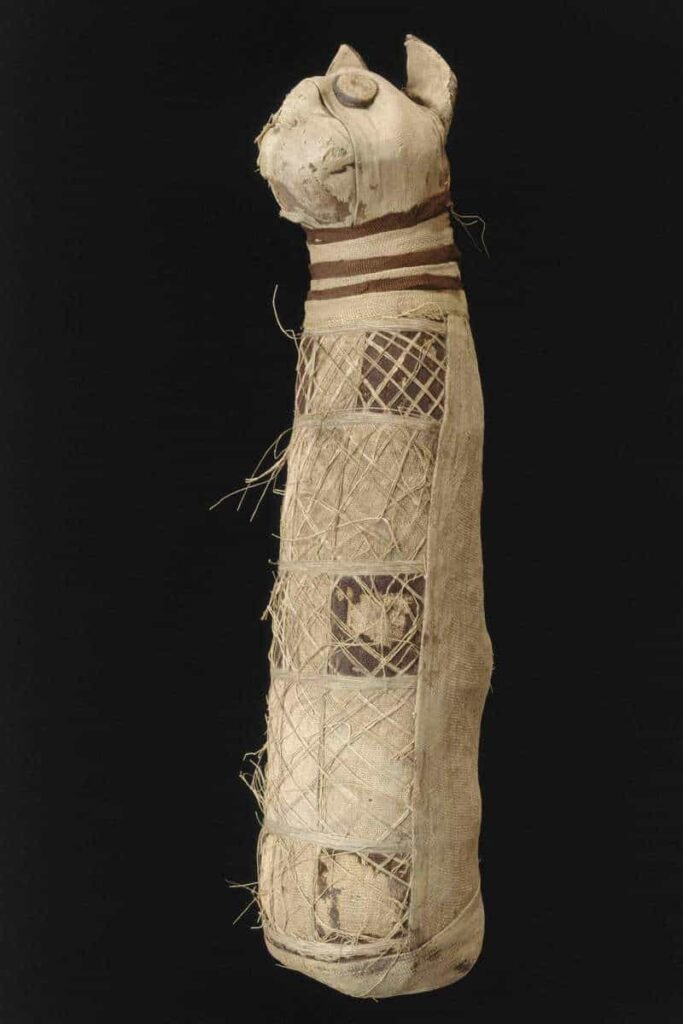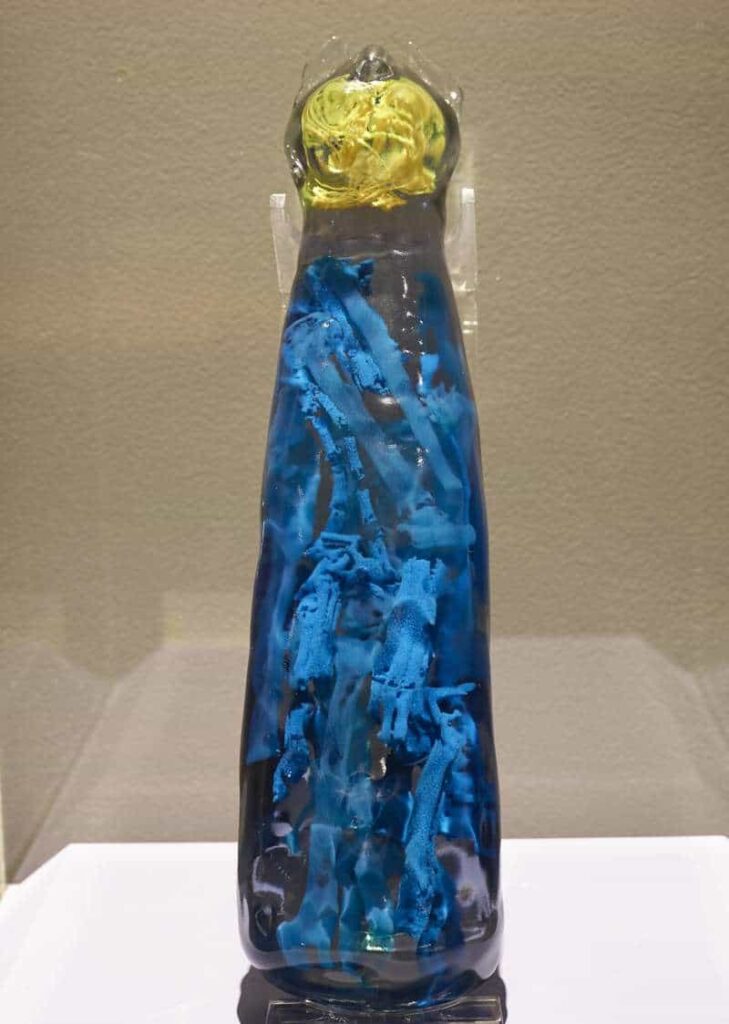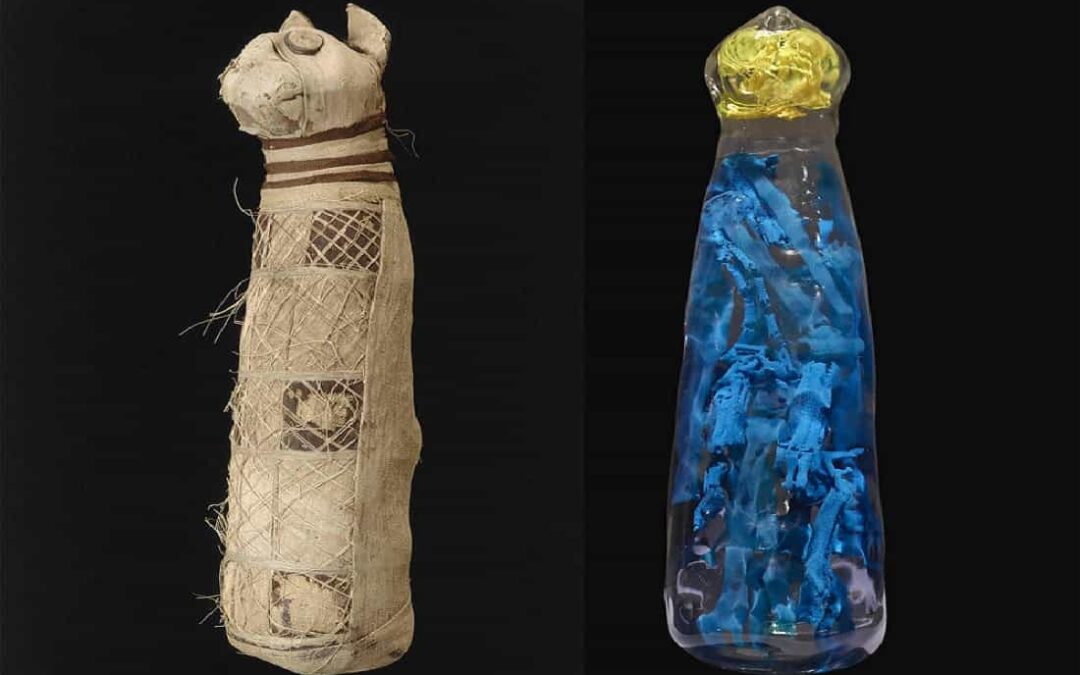A groundbreaking virtual reality initiative has unveiled an intriguing detail about an ancient Egyptian cat mummy housed at the Museum of Fine Arts in Rennes, France.
The museum’s collection, rooted in an 18th-century cabinet of curiosities, includes this particular mummy, which was transferred from the Louvre Museum in 1923 for educational purposes relating to ancient Egyptian civilization.
In 2017, the museum embarked on a virtual reality project leveraging advanced technology. They enlisted a team of specialists, including archaeologists, computer scientists, and VR experts from the University of Rennes 1 and the Institute for Research in Computer Science and Random Systems (IRISA), to create 3D models of selected artifacts. Among them were a Mesoamerican statuette and the cat mummy.
The process began with the production of a transparent 3D print of the mummy using tomodensitometry, a non-invasive imaging technique that utilizes ionizing radiation to produce detailed images.
To the astonishment of the research team, the mummy did not contain just one cat but the remains of three distinct specimens. It remains unclear whether these were domestic cats, wild cats, or another type of small feline.
The most striking revelation was that the skull of the mummy was not that of a cat but a ball of thread. This finding provokes significant questions about the authenticity of Egyptian animal mummies, especially those created for votive purposes, as many were found to be empty or contained a mix of organic remains and other materials.
An Immersive Project
Following the remarkable success of their earlier virtual reality initiative, the Museum of Fine Arts in Rennes has expanded its efforts by creating a new VR application.
This project, named “The Secret of Bastet” in honor of the ancient Egyptian cat goddess, offers visitors a unique opportunity to explore the inner workings of the cat mummy and gain insights into the archaeological process.
The application immerses users in a simulated archaeological laboratory, where they can perform virtual X-rays and CT scans to examine the mummy’s internal structure.
This hands-on experience mimics the procedures used by real archaeologists, allowing users to engage with the scientific techniques involved in studying ancient artifacts.
Jean-Roch Bouiller, the director of the Museum of Fine Arts in Rennes, initially skeptical of virtual reality, expressed his enthusiasm after witnessing the project’s success.
He highlighted the application’s educational value, noting that it provides a captivating way for visitors to understand the archaeological process and appreciate the significance of non-invasive technologies in the analysis of historical objects.








